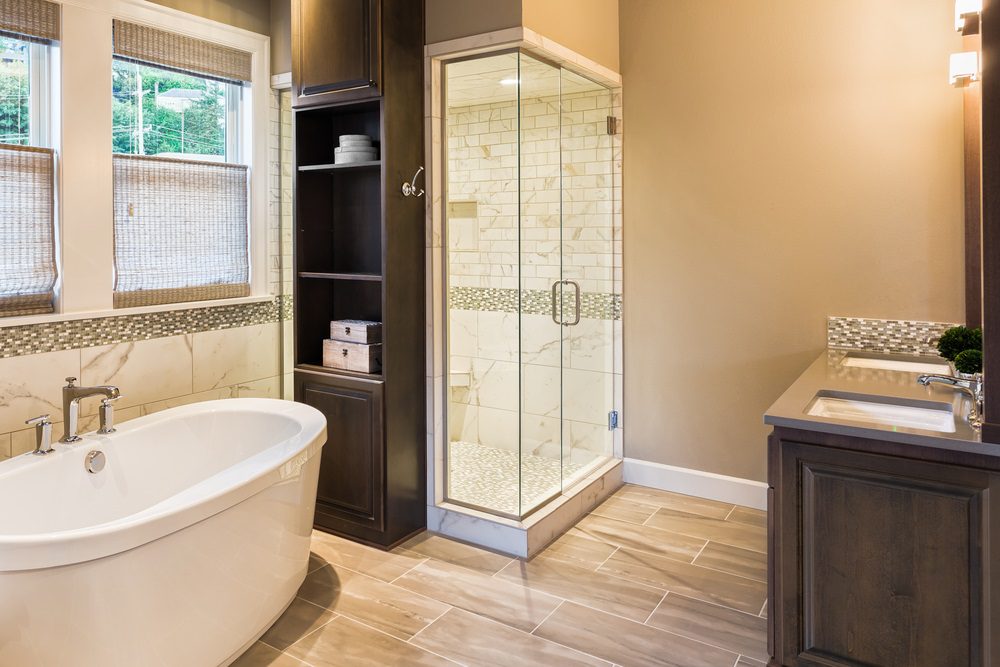Do I Need a Permit to Remodel My Bathroom?
Renovating your bathroom may be a fun job that raises the value of your home and enhances your living environment. But a lot of people get carried away with a demo day and overlook an important step: getting the necessary permits.
So you may be asking “Do I need a permit to remodel my bathroom”
Getting permits may seem tedious, but they exist for a good reason—to ensure your safety and prevent issues down the road. Before you pick up a sledgehammer, it’s crucial to understand bathroom remodeling permit requirements in your area. This guide will walk you through when you need permits, the process to obtain them, and whether DIY without permits is an option. Let’s explore how to remodel your bathroom the right way in this blog post by Unique Kitchen and Baths!
Contents
Types of Bathroom Remodels
When planning a bathroom remodel, it’s important to understand the different types of updates you might make.
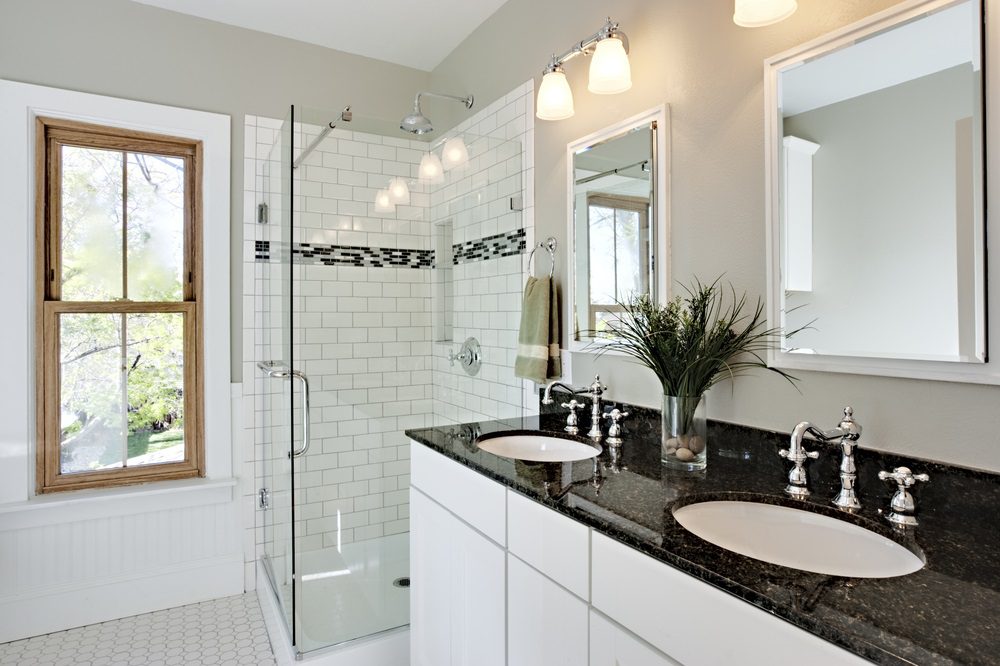
Bathroom remodels generally fall into two main categories:
Cosmetic Changes
Cosmetic changes are surface-level updates that don’t require any structural modifications. Common cosmetic bathroom remodel projects include:
- Painting the walls a new color
- Installing new flooring like tile or vinyl
- Updating light fixtures and hardware
- Adding new window treatments
- Replacing the vanity, sink, faucet, and other fixtures
- Installing new countertops
- Adding new decorative touches like mirrors, art, shelves, etc.
Cosmetic bathroom remodels are usually straightforward DIY projects for experienced homeowners. They don’t require permits or contractors in most cases, and the costs are also relatively low compared to more complex renovations.
Structural Changes
Structural bathroom remodels involve modifying the existing layout and footprint of the space. Common structural changes include:
- Knocking down or building new walls
- Moving plumbing lines for fixtures like toilets, tubs, and sinks
- Expanding the bathroom’s square footage
- Converting a tub to a walk-in shower
- Installing ventilation systems
- Upgrading electrical systems
- Replacing subfloors
- Tiling shower walls
Structural bathroom remodels are major construction projects that usually require permits and licensed contractors. They are also considerably more expensive than cosmetic makeovers. However, structural changes allow you to customize the layout to your needs fully.
Understanding whether you want to make cosmetic or structural changes is an important first step in any bathroom remodel. This will determine the scope, budget, and regulatory requirements.
When Permits Are Required
Do I need a permit to remodel my bathroom? Permits are required for major bathroom remodels that involve structural, electrical, or plumbing work. Here are some examples of bathroom remodels that require permits:
- It is removing or relocating walls and load-bearing structures. This requires a structural permit because it impacts the home’s overall stability.
- They replace or move plumbing pipes and fixtures, such as sinks, toilets, tubs, and showers. Plumbing permits ensure proper drainage and venting.
- They are upgrading electrical wiring for additional circuits, lighting, fans, outlets, or hardwired appliances. Electrical permits help prevent fire hazards and electrocution.
- I am installing a new exhaust fan. Venting fans require ductwork through walls, so a permit is needed.
- A permit is required to convert a half-bath to a full bath with a shower/tub, as well as for the additional plumbing and drainage.
- It adds any new permanent bathroom fixtures requiring wiring or plumbing connections.
Perm approval is required before starting work if the remodel significantly impacts the bathroom’s structure, electrical, or plumbing. This ensures your remodel meets all code requirements for safety and functionality. Skipping permits for major work could risk failing inspections or even physical dangers down the road.
Permit Process Overview
The permitting process for a bathroom remodel generally follows these key stages:
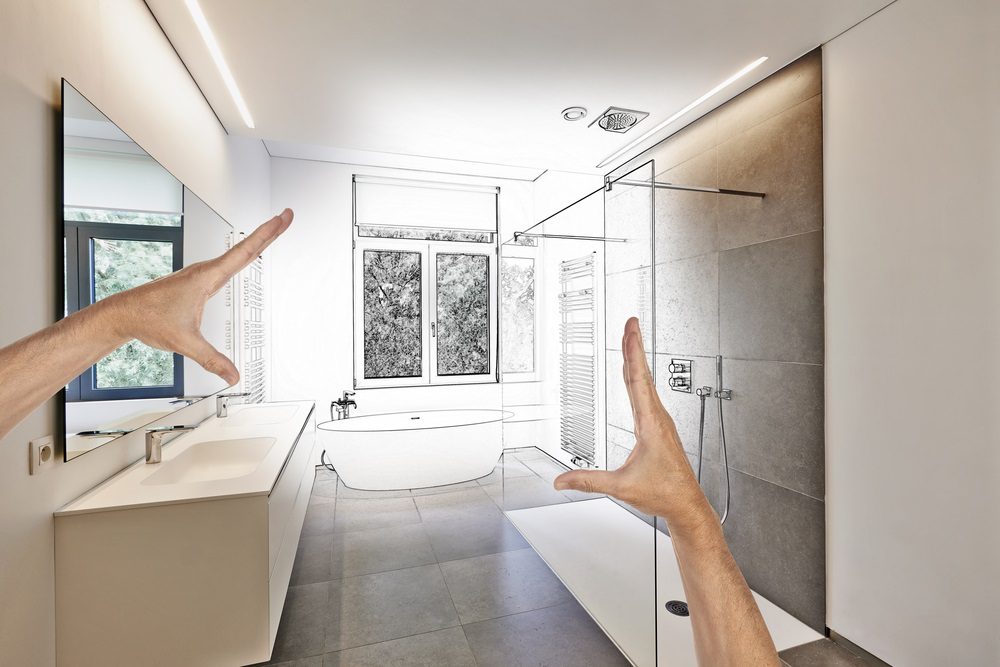
Permit Application
Do I need a permit to remodel my bathroom? This is the first step where you submit the permit application to your local building department. The application requires details like the scope of work, drawings/plans, contractor information, and more. It’s important to provide accurate information to avoid delays.
Some jurisdictions allow you to submit applications online, while others require in-person submission. Application fees vary by location and are also due at this stage.
Plan Review
Once submitted, the building department reviews your permit application and the accompanying plans/documentation. This review checks that the proposed bathroom remodel meets code requirements for electrical, plumbing, ventilation, structural changes, and more.
Simple remodels may be approved within days, while larger projects can take weeks for plan review. If revisions are required, you may need to resubmit plans.
Permit Issuance
After plans are approved, the actual remodeling permit is issued. This permit must be displayed on-site throughout the remodeling project.
Some jurisdictions issue paper permits, while others provide electronic permits. Issuance fees may also apply.
Inspections
With the permit in hand, construction can begin! However, inspections are required at key stages to ensure work meets the code. For bathrooms, common inspections include:
- Plumbing (checking new pipes, fixtures)
- Electrical (outlets, wiring, vent fans)
- Framing (studs, drywall)
- Final inspection
Inspections are scheduled with the building department. Failing an inspection means stopping work until deficiencies are fixed and re-inspected.
Final Approval
Once all inspections are passed, the building department grants final approval and signs off on the permit. This completes the permitting process.
The remodeled bathroom can now be used and enjoyed! Records of the permit and inspections become part of the property’s file with the local jurisdiction.
Cost of Permits
The cost of the permit will change based on the size of the remodeling project and where you live.
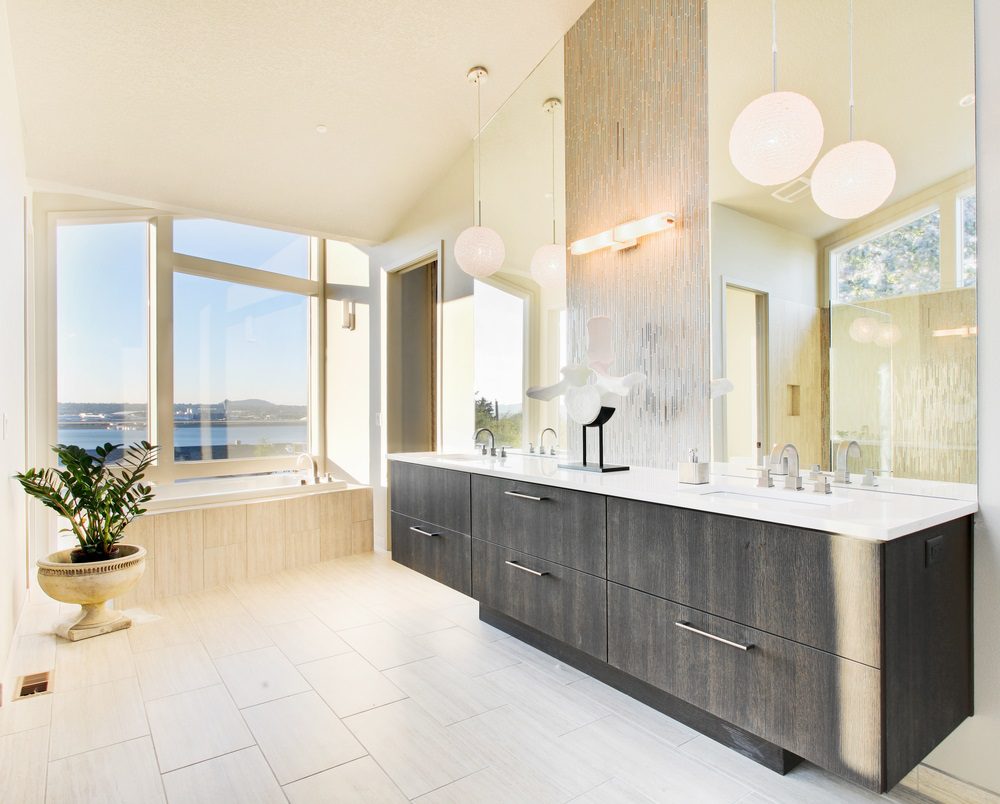
Permit costs are typically determined by the cost of the construction project. The permit will cost approximately 1% to 3% of the entire project cost.
For a basic bathroom remodel costing $5,000, the permit fee alone may cost $50- $150. For a more extensive $15,000 bathroom remodel, permit fees could be $150-450. High-end bathroom remodels exceeding $30,000 may have permit fees upwards of $300-900.
In addition to the permit fee, you’ll also need to factor in the cost of drawings and plans required to apply for the permit, which can add a few hundred dollars. Additional plumbing, electrical, mechanical, and building permit fees may also exist. And remember the hidden cost of your time spent applying for permits and scheduling inspections.
Overall, permits add direct and indirect expenses to a bathroom remodel project. But they help ensure the work meets the code and provide you with legal permission to remodel, which is worth the extra investment. Weigh the costs against the benefits when deciding on permits for your specific bathroom remodel situation.
Using Licensed Contractors
The benefits of hiring licensed contractors for your bathroom remodel are numerous. Licensed professionals have the proper training, skills, and experience to conduct renovations safely and correctly. This helps guarantee that all building laws and regulations are followed, as well as the structural integrity of your house. In order to shield you from responsibility in the event of an accident or injury, licensed contractors also carry worker’s compensation insurance and liability insurance.
When you hire licensed pros, you can be confident you are getting bonded, insured contractors and have passed state or local testing requirements. They have access to professional resources and networks that amateur renovators do not. This allows them to get permits pulled more efficiently. Licensed contractors also have connections with other reputable tradespeople to assist with plumbing, electrical, tiling, and other specialty work.
Working with licensed remodelers provides homeowners with various consumer protections. Many states have recovery funds available if a licensed contractor performs substandard work or fails to finish a job. You also gain recourse with the state licensing board if any problems arise. Unlicensed contractors provide no such consumer protections.
Hiring licensed professionals for your bathroom remodel brings peace of mind. You can feel confident knowing expert artisans handle your home renovation diligently, safely, and up to code. While a licensed contractor may cost more upfront, their expertise often saves money and hassle in the long run by avoiding mistakes, delays, injuries, or code violations. Their experience streamlines the renovation process.
DIY Considerations
Doing bathroom remodeling yourself can save much more money than hiring a contractor, but you must still meet all relevant building codes and regulations. Some key things to keep in mind if taking a DIY approach:
- Research your local building codes thoroughly and get copies of the specific requirements for bathroom remodeling. Pay particular attention to rules regarding electrical wiring, plumbing, ventilation, minimum clearances, and fire safety.
- Consider taking out the required permits, even if you are doing the work yourself. Getting permits means the building department will inspect your project to ensure it meets the code. This provides important protection and peace of mind.
- If you are doing electrical or plumbing work, make sure you have the proper skills, tools, and experience. Mistakes in wiring or pipe connections can be hazardous and expensive to fix. If you are unsure, consider hiring a licensed electrician or plumber just for these portions of the remodel.
- Use quality materials that meet or exceed the standards in your building codes. Don’t cut corners to save money with subpar fixtures or improper construction techniques. This can compromise safety and lead to problems down the road.
- Carefully plan the demolition and remodeling process. Removing walls or sections of the floor may impact important structural elements, pipes, or wires, and damage to these systems can be extremely costly to repair.
- Document the project thoroughly with photos/videos throughout. This creates a record showing the work was done to code. It also helps if repairs are needed later – you’ll know exactly what’s behind the walls.
A DIY bathroom remodel can save thousands of dollars with proper planning, care, and attention to building codes. Do the homework upfront so your finished bathroom is safe, legal, and built to last.
Final Recommendations
While the decision to get a permit often comes down to a cost-benefit analysis for your specific project, there are some clear guidelines on when a permit makes the most sense:
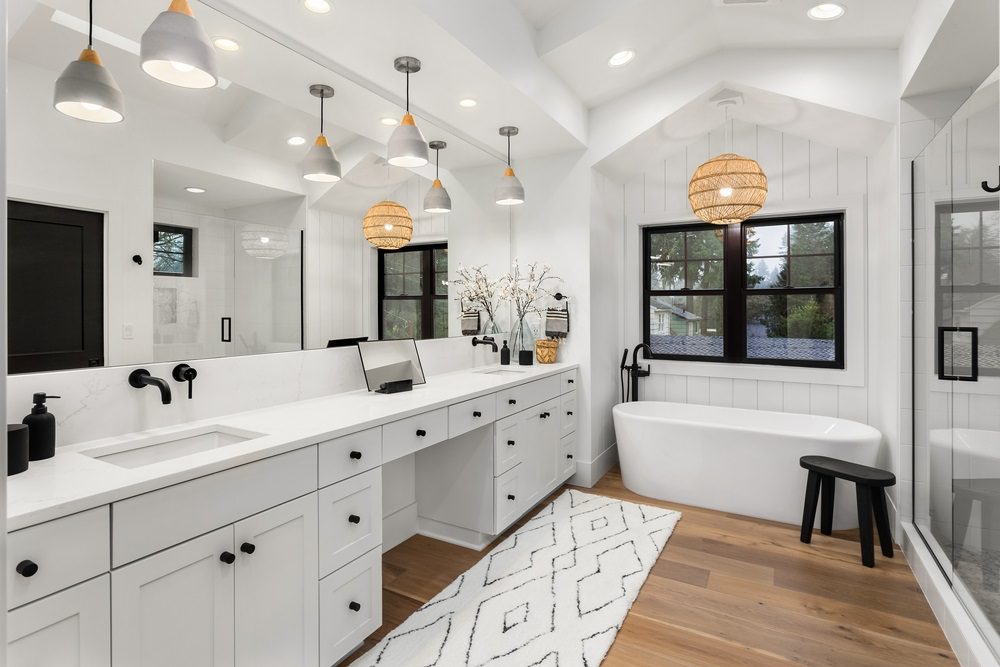
- A permit is almost always required if you are making major structural changes, such as moving walls or plumbing. Don’t risk safety issues down the road.
- If your municipality requires a permit for the work you want to do, follow the rules to avoid potential fines. Check with your local building department.
- If you ever plan to sell your home, having permitted work done by professionals protects your investment and limits liability.
- If modifying load-bearing elements, a permit helps ensure the work meets structural standards. Don’t risk problems when you sell.
- If unsure, opt for the permit. The cost and extra steps are usually worth it for the peace of mind and legal protection.
- If hiring contractors, many will pull the required permits. This transfers liability and helps ensure proper inspections.
- If you are making a large addition, always get a permit. There are many complex dynamics and codes at play.
- If your DIY project involves areas visible to inspectors, permitting avoids having to tear things out if not to code.
In summary, permits add steps but provide significant benefits in most major bathroom remodels. Unless the work is minor, it’s worth doing things officially to gain legal coverage and ensure quality results.
Frequently Asked Questions
Your most popular questions, answered.
What Is a Building Permit?
A building permit is an official approval issued by the local municipality that allows you or your contractor to proceed with a construction or remodeling project on your property. It ensures that the project will be inspected and comply with local building codes, zoning laws, and regulations.
Why Do I Need a Building Permit for a Bathroom Remodel?
Building permits for bathroom remodels are often required to ensure that any modifications adhere to local building codes and regulations. These codes are in place to ensure safety, health standards, and property value protection. Not all bathroom remodels will require a permit, but structural changes, plumbing adjustments, or electrical work typically do.
Can I Do the Work Myself, or Do I Need a Professional
Whether you can DIY your bathroom remodel depends on the complexity of the project and local regulations. Simple cosmetic changes like painting or updating fixtures might not require a professional or a permit. However, structural, electrical, or plumbing work often necessitates hiring licensed professionals and obtaining permits.
How Long Does It Take to Get a Permit?
The processing time for a permit can vary significantly depending on your locality and the complexity of the project. It can range from a few days for simple projects to several weeks or even months for more complicated renovations.
Conclusion
Getting a permit for your bathroom makeover depends on a number of things, such as the extent of the work, your ability to do it yourself, how long it will take, and how much it will cost.
To recap, permits are required for structural changes like moving walls or plumbing, but generally not for cosmetic updates like painting and new fixtures. The permit process can take time and cost money, but it provides oversight for safety and compliance. Using licensed contractors guarantees proper permits are pulled. Doing unpermitted work risks fines if caught.
The bottom line is ensuring your remodel meets the code and is safe. Permits validate that. If you opt-out, take precautions, like having an inspector review the final work.
With some thoughtful planning and research upfront, your bathroom remodel can go smoothly, whether you decide to get a permit or not. The result will be a beautiful new space you can enjoy for years. Get in touch with Unique Kitchen and Baths remodelling center in Mission Viejo to claim a free consultation for your home.
